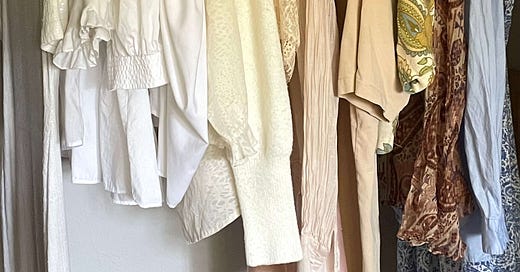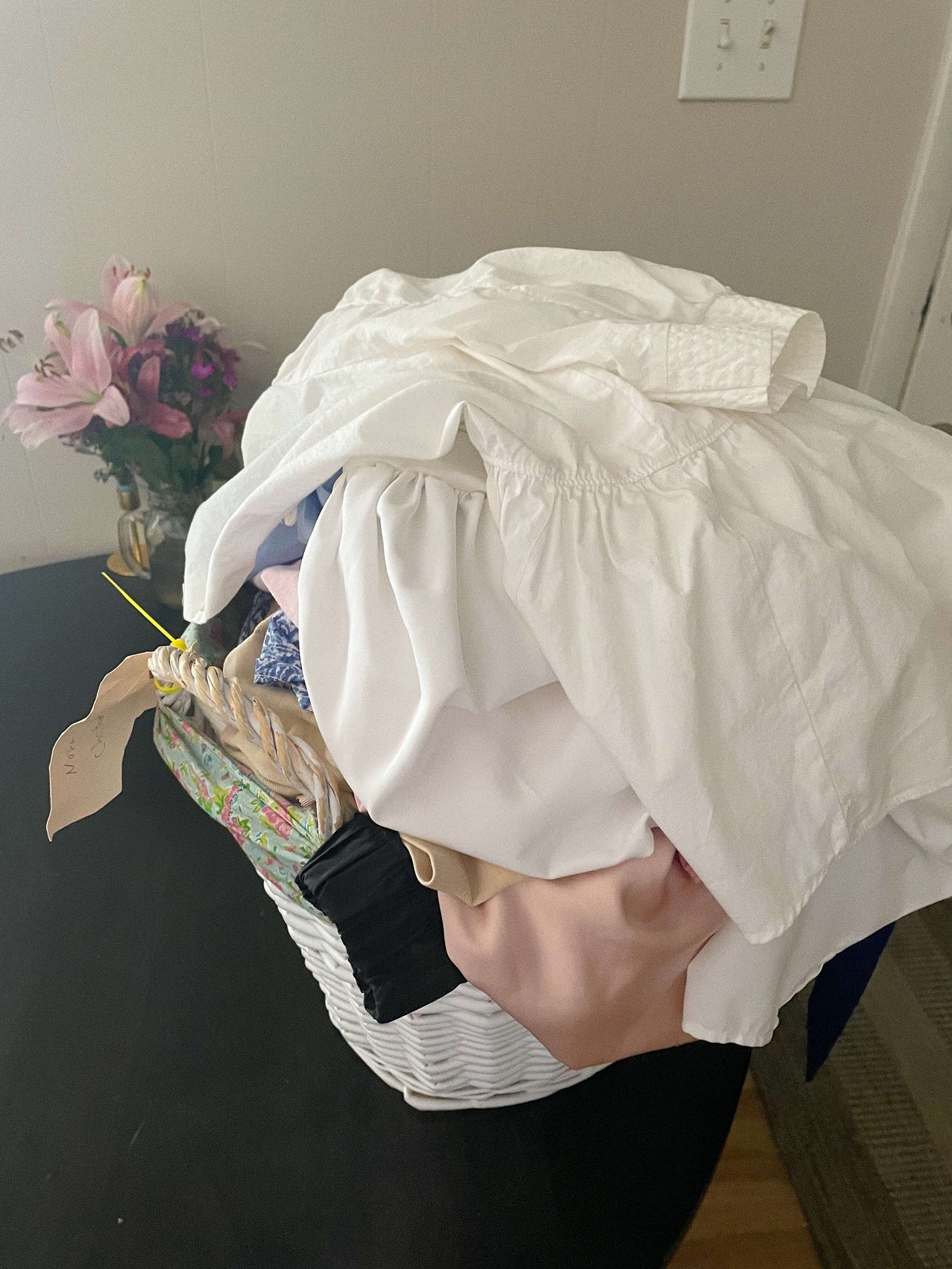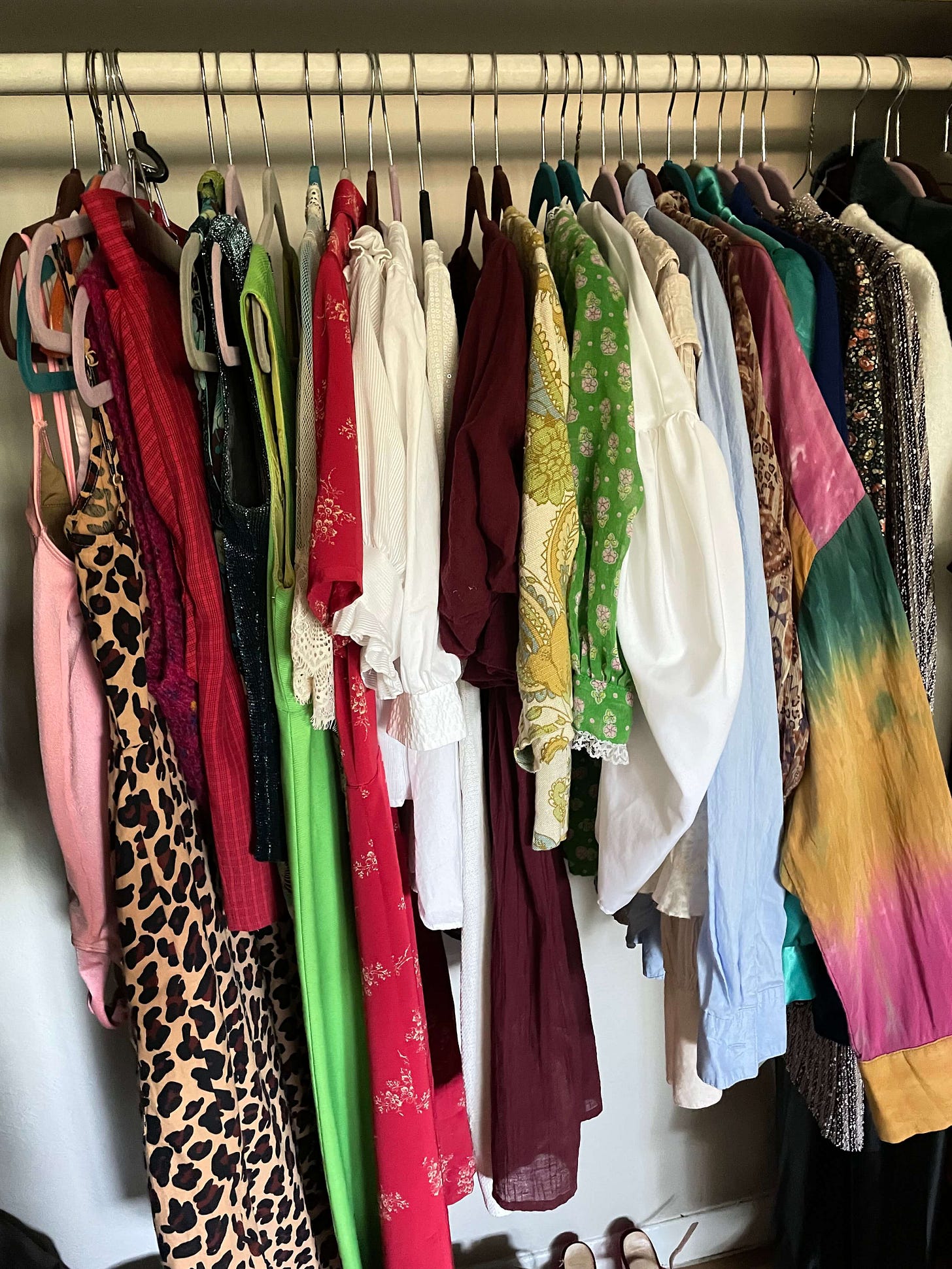How to Actually Make Money Selling Your Clothes to Buffalo Exchange
There’s a lot of angst surrounding in-person resell, and Buffalo buyers are often written off as snooty or sightless for passing on the clothes that, let’s be honest, we ourselves don’t want anymore. When I first moved to Austin back in the day, I worked at the Buffalo Exchange three days a week as an entry-level buyer while freelance writing on the side. Whenever I mentioned working at Buffalo, people would inevitably have a story about a piece of their clothing they couldn’t believe the store didn’t take.
A lot of times, this has more to do with what that Buffalo location already has on rack or what they will be able to sell to their customers than anything else.
Buffalo Exchange buyers are pretty rigorously trained in brands, materials, and trends. I know because I went through multiple interviews and style tests and trained in the store for six months and by the time I left I still wasn’t quite done training.
BE buyers know when something is a diffusion label, a knockoff, or the real deal. They know which basketball shoes the high school kids are crazy about, which buttondown details are most current. They know the names of seams, they know from the tags when your vintage dress was made, but most importantly to keep in mind, they know what will likely sell in that particular store—because the things that don’t sell end up getting marked down and pointed out during team meetings.
BE buyers generally know what they’re doing, and if they don’t, they tend to ask for a second opinion. Don’t be offended if they don’t take your 70s Chanel. They probably agree that it’s a gem, but they know what will and won’t sell.
So don’t lug your laundry bags there in vain. If you follow a few tips, you’ll save yourself a ton of time and walk out richer than you went in.
Clean or launder your garments! First things first: Buffalo doesn’t launder or iron any of their merchandise. Instead, pieces go directly from the counter to the floor in the same hour, so a little time spent treating stains and hand washing delicate items can go a long way toward getting them sold. Aside from choice vintage pieces, which they’re more forgiving about, if there are grease stains on silk, it probably won’t sell. If there are holes, it probably won’t sell. If there are musty clothes or something that’s crazy wrinkled, it ain’t selling.
When you’re about to sell something that needs dry cleaning but are afraid that the cost of cleaning might be more than what you’d make at Buffalo, try throwing a photo of the garment on an app—like DePop or Poshmark—and see if there are any takers. If there’s a lot of interest, you can get it dry cleaned and bake that into the price, or sell online with a caveat that it hasn’t been laundered. If there aren’t takers, try it at Buffalo—even though they probably won’t take it, they will donate it to a reputable local charity for you and save you the extra trip.
But avoid washing clothes too often. Wash wear is something Buffalo workers will definitely notice. Signs of wash wear include pilling, fading, stretching, shrinking, and that bacon-y crinkle at the waist and zipper. Even if they’re sought-after brands and cost you a pretty penny, those $250 Agolde jeans may not make you any money at Buffalo if they have bacon flys.
If you’re starting to resell clothes more often, take note of care tags before and after you purchase items, so you know how to wash them (and if that process is worth your time and effort). You might also note how often you’ll need to launder the piece. It’s best practice both for reselling and for the environment.
For instance, jeans are not the most environmentally-friendly product to buy new, but denim (especially vintage denim) has the benefit of not having to be washed often. If you do a good job of not washing your jeans unless they’re actually dirty, good on you! When you do wash, throw them in the wash inside-out and air dry them. They’ll fetch a better price when you end up selling them.
Presentation is (somewhat) helpful. If you present your stuff like it’s junk, it signals to buyers that you think it’s worthless. But if you bring things in on a hanger, just know that they take each item off its hanger so they can inspect the garment, and that can add to your time at the counter. If you only have a few select pieces, and want them to look presentable, I would suggest bringing them on the hanger. If you have a ton of clothes to bring in, to save your arm and some time, they’ll be equally as presentable if you fold them and stack them neatly in a box or laundry bin.
Use a lint roller, safety razor, fabric shaver or pill comb. Just don’t use a pill comb on items that are too thin and might snag.
Don’t be surprised if certain expensive items don’t sell. Some expensive materials actually won’t retain their value well, so when you’re buying, learn to tell the difference between an investment piece and a splurge. Cashmere, silk, and suede, are unfortunately not forgiving and take a ton of tender loving care to maintain. They might be prone to shrinkage, pilling, staining, etc. Other classic materials like leather and denim will stand the test of time with a little laid-back care.
When you shop there, pop over to the counter and ask what kinds of things they need. They’ll be happy to tell you what areas they’re low in. In Austin, for instance, around festival weeks like ACL or SXSW, we were always in need of festival pieces like crochet tanks and jorts. But because it’s Texas, we usually didn’t take in a ton of coats, even in the winter.
Don’t assume that just because it’s name brand it will sell. Lots of brands like Ralph Lauren, etc. have special tags for their diffusion lines or outlet store lines, and most Buffalo buyers will spot these and know if you paid $30 vs. $200 for a top. Name brand is nice to have, but there are a lot of other factors at play, which brings me to number 8:
Consider selling valuable couture online instead. I had a friend tell me that the same Buffalo buyer she had just seen accept items from Forever21 and Target had passed over her vintage Chanel. This could be for a few reasons. 1) They just can’t see anyone buying that Chanel piece if it doesn’t support current trends. 2) The fabric has too much wear. 3) They can’t authenticate it and therefore are legally bound not to buy it in. 4) The item is too nice to really sell in that store. It could be worth $1,500. That’s wonderful news for you, because you can then sell it online and make out like a bandit. But Buffalo only buys in things for half of what they can sell them for, and nobody is going to walk into Buffalo Exchange looking for an expensive buy. Because we were situated on UT’s campus, customers would be likelier to buy a trendy Free People top than a more expensive label in an outdated style.
Classic items sell. Think office-wear skirts and blouses, vintage Levi’s, and brands that only change slightly in response to yearly trends, like a top from Everlane.
On-trend items also sell. That skirt you’ve had since high school? Maybe it’s circled back and is in fashion again. If it’s in good condition, try it out. I have a box of things that are “out” now but that I expect to come back into fashion in the future. When 2026 rolls around, I’ll either wear them or sell them for a better price.
On-trend items don’t have to be in season. They just have to be on trend. If it’s the heat of summer and you have an amazing fur coat to bring in, it’s likely they’ll accept. If you bring in a bunch of beat-up ski shells in the summer, maybe not! Buffalo takes “the best of all seasons,” which means try it and see, or try it again in the more appropriate months.
Buffalo often doesn’t take certain items, like sunglasses. They buy those in as new merch. So you may want to peddle your sunnies elsewhere.
Jewelry! Make sure you detangle your jewelry. I can’t stress this enough. You might think you’re saving time by just rushing it there in a big bundle, but it will be awkward when you’re standing face-to-face with the Buffalo Exchange employee for 30 minutes as they detangle your every item. It’s also bad for the jewelry, and again: presentation. If you present your junk like it’s junk, the buyer won’t be inclined to value it. Also, make sure all the earrings have matches! (?!!)
Have a price in mind. Unless you just want to get rid of everything and you’re motivated to take any offer, think about what you would realistically part with each item for, and go in with that number. Remember, you don’t have to accept their offers and it doesn’t have to be all or nothing.
Most importantly: Have your driver’s license. Buffalo is required by law to check your ID, so have your driver’s license in hand when you come to sell, otherwise you will have wasted a whole trip.
Maybe you don’t have time to keep up with the trends. That’s what the buyers are for! But if you follow these tips, you’re going to have greater success when you try to sell, and trust me, you will not get your feelings hurt.
Selling at Buffalo is great for the casual reseller because it means you don’t have to worry about pricing, measuring, listing, DMing about, or shipping anything yourself, especially things that would only sell for 5 or 10 bucks. You might get more for an item online, but it could sit there for months before anyone buys it, and you could be making multiple trips to the post office for just one item at a time.
At Buffalo, of course, you can also shop there while you sell with your in-store credit.
Plus, it helps hold you accountable to yourself. Too often, we blindly dump our clothes off at a Goodwill, and because they sort it all in the back, we never have to actually face what happens to the bulk of our fast fashion refuse. If we stand face-to-face with someone and get feedback about what we’re recycling back into the community, this empowers us to make better future purchasing choices not only for ourselves but also for the environment.




